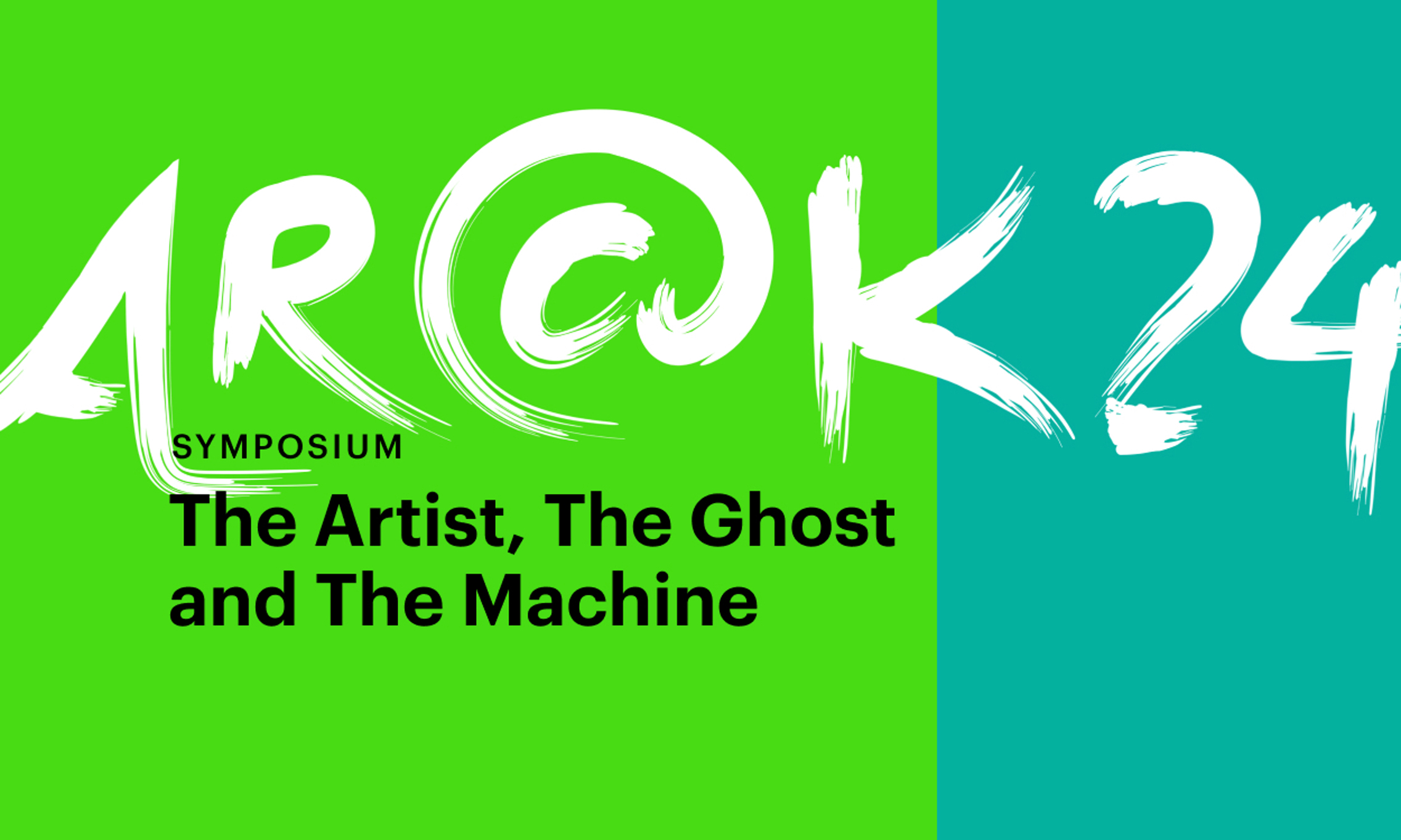NTO talk - AI and music
In September 2023, I had the honor of delivering a presentation to the music division of the Norwegian Association of Theatres and Orchestras (NTO)
The Artistic Research at Kristiania (AR@K) is an event that has been going for a few years at the private college Kristiania in Oslo, Norway, that has been gathering artists and artistic researchers mainly from Norway, but also including contributions from abroad. This year’s topic was art and technology, or as they phrased it: “The Artist, The Ghost, and The Machine”. Anyway, the topic resonated well with my research and artistic activities, and the title of my accepted abstract was The Sounds of Ski Poles in hard Packed Snow in an Upper Manhattan Bedroom.
 AR@K 24 logo
AR@K 24 logo
This presentation was about a the process of making a piece of mixed music with fixed media and live cello improvisation called Yellowstone. Winter. that was the result of a telematic collaboration between myself and cellist Madeleine Shapiro living in Manhattan, New York going on for several years. The piece will be premiered at the New York City Electroacoustic Music Festival in June 2024 in a version with fixed media and live cello improvisation.
While Madeleine was supposed to attend to the presentation via Zoom, practical matters got in the way, and we opted for a solution where we combined a pre-recorded video of Madeleine with my on-site presentation.
After presentations of ourselves and our earlier collaborative works (see other posts here) I started the presentation with locating our work in a landscape among several musical genres and practices that I feel this work relates to. First of all, it is a type of live-electronics work, in the sense that it presents a mix electronically processed and ‘live’ sounds (at least it will in the to be premiered version). If the term mixed music wasn’t limited to the tradition of classical concert music, usually note-based, I feel that Lacroix’ description of this genre as “music in which some sound sources are acoustic and others electroacoustic” would fit well (Lacroix, 2022).
Furthermore, having text as a central element it could to some degree relate to the text-sound composition tradition, since the text plays a crucial role here, and some manipulations of it are introduced. Still, I feel that these are too modest for this label to really be applicable here. Bringing in recordings from the environment could also to some degree qualify this piece as a soundscape composition, although our composition relates more to memories and imagined soundscapes than real ones. Lastly, the central role of electronically processed sounds lying on a continuum between reality and abstraction (Young, 1998).
Part of our presentation related to the way that we have collaborated with this piece as well as others. My proposal was that it could be described as a version of telematic music making allowing for slowness, time for reflection and afterthought, since it was based on iterative cycles of recording (me in the forest/mountain area of Bymarka, Trondheim and Madeleine in her upper Manhattan working room), sending, listening and commenting (on email) over years, going back and forth between Trondheim and New York. After some time, processing and combining were also added to the cycle on my side. Having only most of the time simple handheld audio recorders, the quality of some recordings has been far from ideal, and this has necessitated certain types of noise cleaning and processing to achieve musically acceptable results.
My proposal was that it could be described as a version of telematic music making allowing for slowness, time for reflection and afterthought
Here you can listen to some of the recordings of skiing and snow that were presented at the symposium:
Our piece was composed around a narrative by Madeleine telling the story of a ski trip she did in Yellowstone several years ago, being alone in the woods with loads of fresh snow. All the sensations of beauty and calmness that the experience entailed, was contrasted by an afterthought when telling the story about her worry that this might be the last time she experienced such a wonderful day - in light of the climate situation, and specifically a record of 700 days without snow in New York State.
For me, the first and positive part of the narrative expressed an experience that bears the marks of environmental aesthetics, described by Brady as “the sensory, affective, and imaginative aspects of the experience that dominate and underpin the aesthetic values and meanings discovered through the experience” (Brady, 2023). The second, however, could be related to the term of solastalgia, a form of ecological grief which Albrecht describes as “an expanding domain of human emotion tied to feelings of grief and loss at that which has already negatively changed or disappeared in the here and now” (Albrecht 2020, cited in Brady, 2023, p.400-1).
Solastalgia, ‘an expanding domain of human emotion tied to feelings of grief and loss at that which has already negatively changed or disappeared in the here and now’
Glenn A. Albrecht
After the recorded narrative was cleaned in terms of noise, somewhere around a half of the narrative was removed to avoid redundancies, and the remaining phrases where then spread out over three sections, with an intention of allowing for afterthought and interplay between music and text for the listener.
The presentation ended with playing excerpts from an work-in-progress version of the composition.
Brady, E. (2023). Environmental Aesthetics and Global Climate Change. In Handbook of the Philosophy of Climate Change (pp. 395-414). Springer.
Lacroix, M. (2022). Deus Ex Machina: Synchronization Strategies in Mixed Music Norwegian University of Science and Technology. Trondheim.
Young, J. (1996). Imagening the source: The Interplay of Realism and Abstraction in Electroacoustic Music. Contemporary Music Review, 15(I), 73-93.
